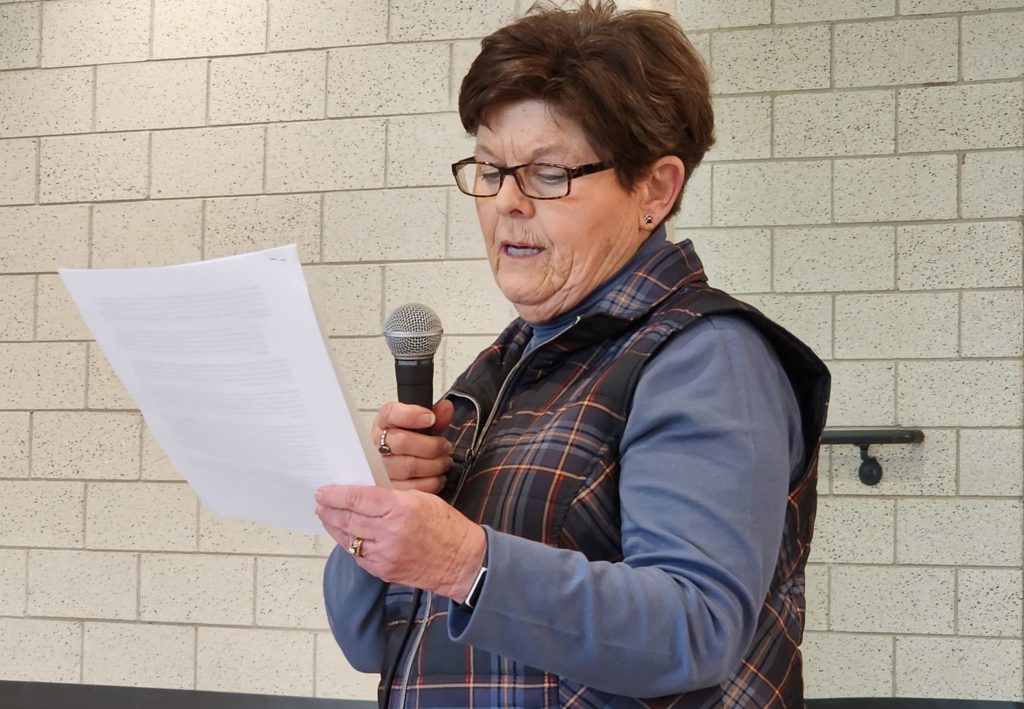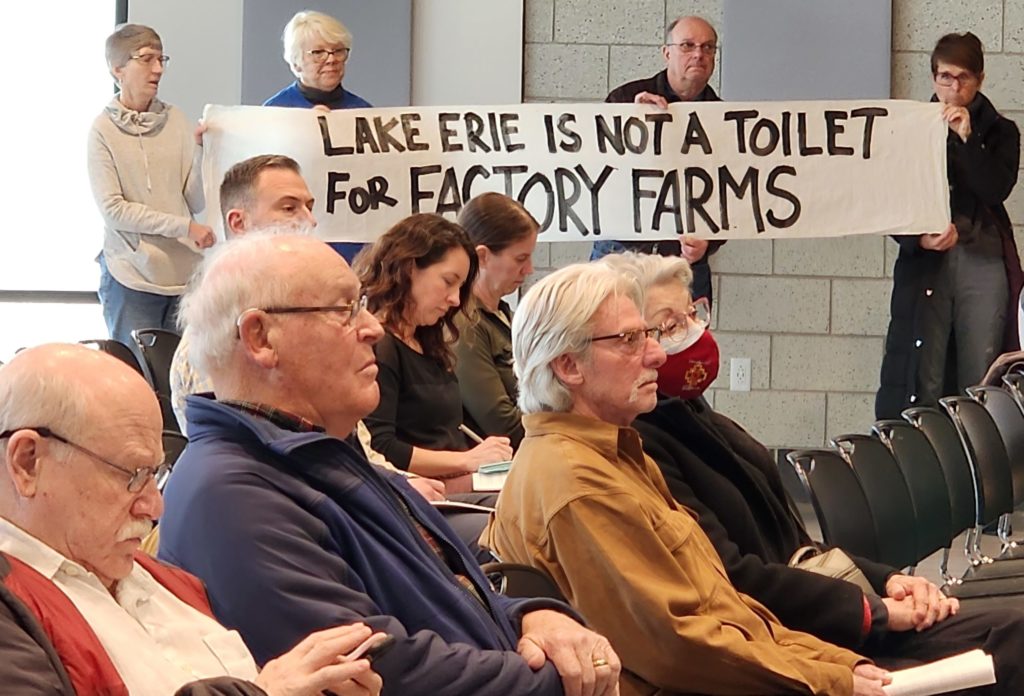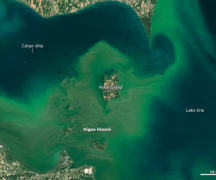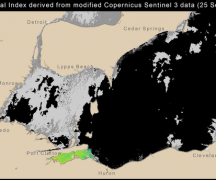By JAN LARSON McLAUGHLIN
BG Independent News
The Ohio EPA’s report on contaminants in the Maumee River watershed ignores the main culprit for harmful algal blooms in Lake Erie, according to speakers at two hearings last week in Bowling Green.
Excess application of manure from large livestock farms (Concentrated Animal Feeding Operations) on fields is to blame for much of the phosphorus runoff getting into the Maumee River and eventually into Lake Erie, according to several members of the public who spoke at the public hearings.
That phosphorus fuels harmful algal blooms and turns the waterways green. Yet, the Ohio EPA report fails to record many test results from the runoff, the speakers said.
“They are trying to pretend that CAFOs don’t exist,” said David Neuendorff, of Bowling Green.
The hearings were the last opportunity for in-person testimony before the Ohio EPA turns over its plan to the U.S. EPA for review.
During one of the hearings, approximately 60 people attended, with 10 people criticizing the report on the Maumee watershed. Members of the public testified that the Ohio EPA refuses to test areas near CAFOs, hence the report fails to fully address the manure generated by CAFOs.
Some accused the state of bending to the influence of the Ohio Farm Bureau and international meat industries.
“We are simply appeasing big ag,” Kim Axe said.
The Ohio EPA’s report, called the Maumee Watershed Nutrient Draft Total Maximum Daily Load Report, ignores the impact of manure runoff on the health of Lake Erie, the speakers said.

Vickie Askins, of rural Cygnet, has been protesting CAFOs for 19 years. The EPA has stated that about 90% of the Maumee River phosphorus runoff pollution is attributed to agriculture. Yet, Ohio has failed to enact policies that would stop the proliferation of CAFOs, she said.
“Ohio has become a ‘go-to state for CAFOs,” Askins said.
Askins noted changes since Lake Erie was cleaned up in the 1990s:
- Commercial fertilizer sales have steadily declined since 1975 and are now less than half of what they were in the 1970s.
- High phosphorus detergents were banned by state legislation.
- Phosphorus was removed from lawn care products by Scotts in 2012.
- Investment of hundreds of millions of dollars in sewage treatment plant upgrades, adoption of pollution prevention technologies and improvements in industrial wastewater treatment have resulted in the state reaching reduction goals for most point source pollutants.
Meanwhile, the number of CAFOs has increased dramatically during the last 20 years, especially in the western Lake Erie basin – leading to a large increase in land application of manure.
Askins noted that in November 2022 the U.S. EPA denied Ohio’s request to transfer the federal authority over CAFOs to the Ohio Department of Agriculture. In its letter, the U.S. EPA made it clear that the ODA’s program did not comply with at least 81 federal regulations, she said.
The ODA has loopholes which allow CAFO owners to circumvent rules by selling their manure to someone “not under the control of the CAFO owner,” Askins said. Consequently, the state does not have information on where the manure is being applied.
Askins and others were critical of the H2Ohio program operated by the state to encourage farmers to reduce phosphorus runoff in the Maumee River Watershed. The program uses voluntary incentives – all carrot, no stick.

Lake Erie Advocates founder Mike Ferner testified that Lake Erie has gotten “sicker and sicker” in the last 20 years. He reminded of the three-day period in 2014 when residents in the Toledo area could not safely use their water due to the harmful algal blooms.
Ferner blamed the CAFOS, which he called “confined barbaric feeding facilities.”
“The corruption in Columbus reaches all the way to Lake Erie,” he said. “This plan says nothing about reducing liquid manure dumped on fields draining into Lake Erie.”
Speaking on behalf of the Lucas County Commissioners, Fritz Byers said the Ohio EPA report “falls far short of what is required.”
“If we fail to register CAFOs as discharging sources of pollution, we cannot achieve the goal that we all say publicly we want to achieve,” of restoring “our Great Lake,” Byers said.





